Aim of the project
The aim is to interface DS1307 RTC (a real time clock) IC with an Atmega16 microcontroller and display the time, day, and date on anLCD.
The general application of the circuit
Working of the Circuit
In this project mcu atmega16 communicates with DS1307 IC on I2C communication protocol, in which MCU works as master and DS1307 as a slave. I2C communication takes place through SDA(serial data) and SCL(serial clock line) where Atmega16 and DS1307 are connected through these lines. Atmega16 writes the data In registers of DS1307 and then reads it which is then displayed on the LCD.
Circuit Description
The LCD is connected to PORTA and PORTB of the Atmega16. The data pins D0 to D7 are connected to respective pins A0 to A7 of the Atmega16.The control pins RS, R/W and EN are connected to PB7, PB6, PB5 pins of Atmega16 respectively.
ATMEGA16 MCU
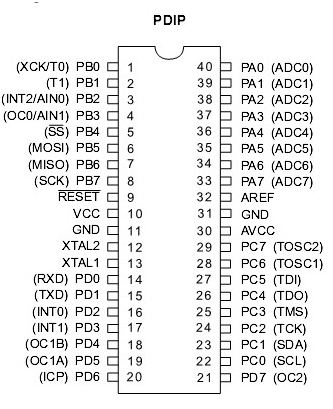
Fig. 1: Pin Diagram of AVR ATMega16
DS1307 RTC REAL TIME CLOCK IC

Fig. 2: Pin Diagram of DS1307 RTC IC
I2C COMMUNICATION
16 BY 2 LCD –YJD1602A1
The LCD receives the data from Atmega16 and displays it in readable format. Pin1 VSS is connected to GND, Pin2 VCC connected to 5V and Pin3 VE is connected to a potentiometer to receive a contrast voltage b/w 0 and 5V.
RS, R/W,EN are connected to PB7,PB6,PB5 pins on the MCU and 8 data pins are connected to PORTA of MCU.
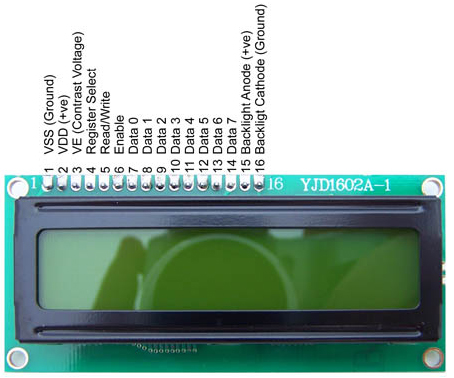
Fig. 3: Typical Image of Character LCD Module
Block Diagram-
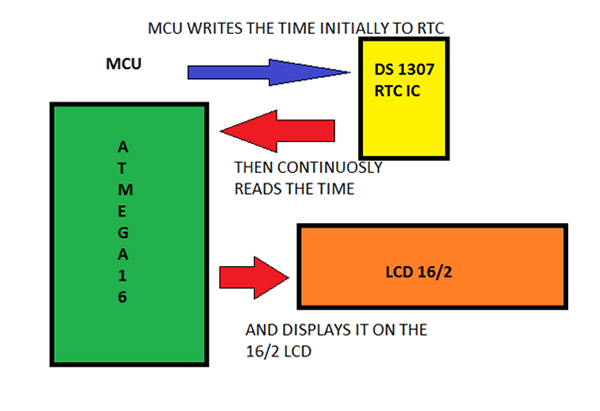
Fig. 4: Block Diagram of AVR ATMega16 and RTC DS1307 Interfacing Circuit
COMPONENTS REQUIRED
1 ATEMGA16
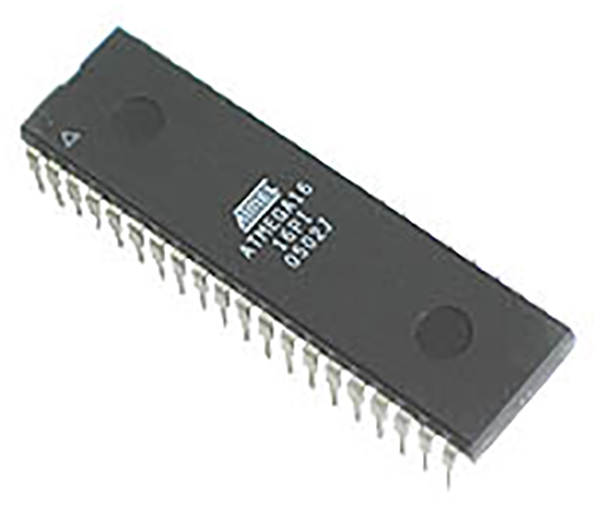
Fig. 5: Typical Image of AVR ATMega16 Microcontroller
2 DS1307

Fig. 6: Typical Image of DS1307 RTC IC
3 LCD 16 BY 2 YJD1602A1
CIRCUIT DIAGRAM
Fig. 7: Typical Image of 16X2 Character LCD
(Check the circuit diagram tab for complete circuit for Interfacing ds1307 with atmega 16 avr mcu)

Fig. 8: Prototype of AVR ATMega16 and RTC DS1307 Interfacing Circuit

Fig. 9: Image of Character LCD displaying current time of the day
Project Source Code
#include <avr/io.h>
#include <util/delay.h>
#include <avr/interrupt.h>
#include <stdlib.h>
#define MT_SLA_ACK1 0x18 //twi interface commands for ds1307
#define MT_DATA_ACK1 0x28
#define START 0x08
#define MT_SLA_ACK 0x40
#define MT_DATA_ACK 0x58
#define SLA_R 0b11010001 //address for ds1307
#define SLA_W 0b11010000
uint8_tBCDToDecimal (uint8_t bcdByte)
{
return (((bcdByte& 0xF0) >> 4) * 10) + (bcdByte& 0x0F);
}
uint8_tDecimalToBCD (uint8_t decimalByte)
{
return (((decimalByte / 10) << 4) | (decimalByte % 10));
}
uint8_t address;
voidinitialize_LCD(void);
charfirst_column_positions_for_LCD[4]={0,64,20,84};
voidcheck_if_LCDisbusy(void); // checking LCD ready to process
voidLCD_enabledisplay(void); //disply enable
voidsend_A_command(unsigned char command); // sending command
voidsend_A_character(unsigned char character); // sending character
voidsend_A_string(char *stringsofcharacter); // send string
voidgoto_location(uint8_t x, uint8_t y);
voidsend_string_and_location(uint8_t x,uint8_t y, char *stringOFcharacter);
voidsend_integer(uint8_t x,uint8_t y,intintegertodisplay,charnumberdigits);
uint8_t data_Read;
uint8_t H,M,S,WK,DY,MN,YR;
uint8_t H1,M1,S1,WK1,DY1,MN1,YR1;
voidTWI_bit_rate_set(void)
{
TWBR=8; // set SCL frequency to 400kHz
TWCR|=1<<TWEN;
}
intTWI_start()
{
TWCR = (1<<TWINT)|(1<<TWSTA)|(1<<TWEN); // set start
while (!(TWCR & (1<<TWINT))); //Wait for TWINT Flag set. This indicates that the START condition has been transmitted
if ((TWSR & 0xF8) != START) //Check value of TWI Status Register. Mask prescaler bits. If status different from START go to ERROR
return 0;
}
intTWI_send_address_read() // READ..........send slave address in read mode
{
TWDR = SLA_R;
TWCR = (1<<TWINT) | (1<<TWEN); // Load SLA_W into TWDR Register. Clear TWINT bit in TWCR to start transmission of address
while (!(TWCR & (1<<TWINT))); //Wait for TWINT Flag set. This indicates that the SLA+W has been transmitted, and ACK/NACK has been received
if ((TWSR & 0xF8) != MT_SLA_ACK) // Check value of TWI Status Register. Mask prescaler bits. If status different from MT_SLA_ACK go to ERROR
return 0;
}
intTWI_send_addr_data(uint8_t data) // WRITE.........send the address of data
{
TWDR=data;
TWCR = (1<<TWINT) | (1<<TWEN); //Load DATA into TWDR Register. Clear TWINT bit in TWCR to start transmission of data
while (!(TWCR & (1<<TWINT))); // Wait for TWINT Flag set. This indicates that the DATA has been transmitted, and ACK/NACK has been received
if ((TWSR & 0xF8) != MT_DATA_ACK1) // Check value of TWI Status Register. Mask prescaler bits. If status different from MT_DATA_ACK go to ERROR
return 0;
}
intTWI_get_data() // READ.....get the address of the data required
{
TWCR = (1<<TWINT) | (1<<TWEN); //Load DATA into TWDR Register. Clear TWINT bit in TWCR to start transmission of data
while (!(TWCR & (1<<TWINT))); // Wait for TWINT Flag set. This indicates that the DATA has been transmitted, and ACK/NACK has been received
data_Read=TWDR;
TWCR = (1<<TWINT) | (1<<TWEN); //Load DATA into TWDR Register. Clear TWINT bit in TWCR to start transmission of data
while (!(TWCR & (1<<TWINT))); // Wait for TWINT Flag set. This indicates that the DATA has been transmitted, and ACK/NACK has been received
if ((TWSR & 0xF8) != MT_DATA_ACK) // Check value of TWI Status Register. Mask prescaler bits. If status different from MT_DATA_ACK go to ERROR
return 0;
}
intTWI_send_address_write() // WRITE........send slave address in write mode
{
TWDR = SLA_W;
TWCR = (1<<TWINT) | (1<<TWEN); // Load SLA_W into TWDR Register. Clear TWINT bit in TWCR to start transmission of address
while (!(TWCR & (1<<TWINT))); //Wait for TWINT Flag set. This indicates that the SLA+W has been transmitted, and ACK/NACK has been received
if ((TWSR & 0xF8) != MT_SLA_ACK1) // Check value of TWI Status Register. Mask prescaler bits. If status different from MT_SLA_ACK go to ERROR
return 0;
}
voidTWI_stop() //................................stop................................................//
{
TWCR = (1<<TWINT)|(1<<TWEN)|(1<<TWSTO); // Transmit STOP condition
}
int write(uint8_t pg_addr,uint8_t data1)
{
TWI_bit_rate_set();
TWI_start();
TWI_send_address_write();
TWI_send_addr_data(pg_addr); // send address of page
TWI_send_addr_data(data1); // send data to be written to the address
TWI_stop();
}
int read(uint8_t pg_addr)
{
TWI_bit_rate_set();
TWI_start();
TWI_send_address_write();
TWI_send_addr_data(pg_addr);
TWI_start();
TWI_send_address_read();
TWI_get_data();
TWI_stop();
}
voiddisplay_num(uint8_t DIG,uint8_t loc)
{
if(DIG<=9)
{send_integer(loc,1,0,3);
send_integer((loc+1),1,DIG,3);
}
else
send_integer(loc,1,DIG,3);
}
voiddisplay_ALP(uint8_t DIG,uint8_t loc)
{
if(DIG<=9)
{send_integer(loc,2,0,3);
send_integer((loc+1),2,DIG,3);
}
else
send_integer(loc,2,DIG,3);
}
voiddisplay_weekday(uint8_t WK)
{
if(WK==1){send_string_and_location(1,2,"<SUN>");}
else if(WK==2){send_string_and_location(1,2,"<MON>");}
else if(WK==3){send_string_and_location(1,2,"<TUE>");}
else if(WK==4){send_string_and_location(1,2,"<WED>");}
else if(WK==5){send_string_and_location(1,2,"<THU>");}
else if(WK==6){send_string_and_location(1,2,"<FRI>");}
else if(WK==7){send_string_and_location(1,2,"<SAT>");}
}
#define sec_register 0x00
#define min_register 0x01
#define hour_register 0x02
#define weekday_weekend_register 0x03
#define day_register 0x04
#define month_register 0x05
#define year_register 0x06
voidRTC_write_data(void)
{
write(sec_register,DecimalToBCD(00));
write(min_register,DecimalToBCD(52));
write(hour_register,DecimalToBCD(20));
write(weekday_weekend_register,DecimalToBCD(1));
write(day_register,DecimalToBCD(15));
write(month_register,DecimalToBCD(03));
write(year_register,DecimalToBCD(15));
}
voidRTC_read_data()
{
read(hour_register);
hour_digits(data_Read);
read(min_register);
min_digits(data_Read);
read(sec_register);
sec_digits(data_Read);
read(weekday_weekend_register);
weekday_weekend_digits(data_Read);
read(day_register);
day_digits(data_Read);
read(month_register);
month_digits(data_Read);
read(year_register);
year_digits(data_Read);
send_string_and_location(1,1,"TIME-");
display_num(H,6);
send_string_and_location(8,1,":");
display_num(M,9);
send_string_and_location(11,1,":");
display_num(S,12);
display_weekday(WK);
display_ALP(DY,6);
send_string_and_location(8,2,"/");
display_ALP(MN,9);
send_string_and_location(11,2,"/");
display_ALP(YR,12);
}
voidhour_digits(uint8_t data)
{H=BCDToDecimal(data);}
voidsec_digits(uint8_t data)
{S=BCDToDecimal(data);}
voidmin_digits(uint8_t data)
{M=BCDToDecimal(data);}
voidweekday_weekend_digits(uint8_t data)
{WK=BCDToDecimal(data);}
voidday_digits(uint8_t data)
{DY=BCDToDecimal(data);}
voidmonth_digits(uint8_t data)
{MN=BCDToDecimal(data);}
voidyear_digits(uint8_t data)
{YR=BCDToDecimal(data);}
voidinitialize_LCD()
{
DDRB|=(1<<5)|(1<<6)|(1<<7);
_delay_ms(2);
send_A_character(0x01);
_delay_ms(2);
send_A_command(0x38);
_delay_us(10);
send_A_command(0b00001110);
_delay_us(10);
}
voidcheck_if_LCDisbusy()
{
DDRA=0;
PORTB|=1<<6;
PORTB&=~1<<6;
while(PORTA>=0x80)
{
LCD_enabledisplay();
}
DDRA=0xFF;
}
voidLCD_enabledisplay()
{
PORTB|=1<<5; // enable on , bit of delay then off
_delay_ms(5);
PORTB&=~1<<5;
}
voidsend_A_command(unsigned char command)
{
check_if_LCDisbusy();
PORTA=command;
PORTB&=~((1<<6)|(1<<7)); // readwrite =0 and register select also =0 for sending a command
LCD_enabledisplay();
PORTA=0;
}
voidsend_A_character(unsigned char character)
{
check_if_LCDisbusy(); // readwrite =0 and register select =1 for sending a command
PORTA=character;
PORTB&=~(1<<6);
PORTB|=1<<7;
LCD_enabledisplay();
DDRA=0;
}
voidsend_A_string(char *stringsofcharacter)
{
while(*stringsofcharacter>0)
{
send_A_character(*stringsofcharacter++);
}
}
voidgoto_location(uint8_t x, uint8_t y) // takes cursor to the desired position as on x and y value.
{
send_A_command(0x80 + first_column_positions_for_LCD[y-1]+ (x-1));
}
voidsend_string_and_location(uint8_t x,uint8_t y, char *stringofcharacters) // the string is taken to the desired location on lcd
{
goto_location(x,y);
send_A_string(stringofcharacters);
}
voidsend_integer(uint8_t x,uint8_t y,intintegertodisplay,charnumberdigits) // specify the no. of digits of the integer
{
charstringtodisplay[numberdigits];
itoa(integertodisplay,stringtodisplay,10); // 10 means decimal -user undersatandable
// converted the integer to string
inti;
for(i=0;i<4;i++) {send_A_string(" ");} //reserves 4 digits for our display and removes any garbage
send_string_and_location(x,y,stringtodisplay);
send_A_string(" "); // space provided to get rid of any garbage or 0 value
}
void wait(int a)
{ inti;
for(i=1;i<=a;i++)
{_delay_ms(1000);}
}
int main(void)
{
initialize_LCD();
send_A_command(0x01);
RTC_write_data();
// first program with write statement then comment write statement and reprogram
while(1)
{
RTC_read_data();
}
}
###
Circuit Diagrams
Filed Under: Electronic Projects

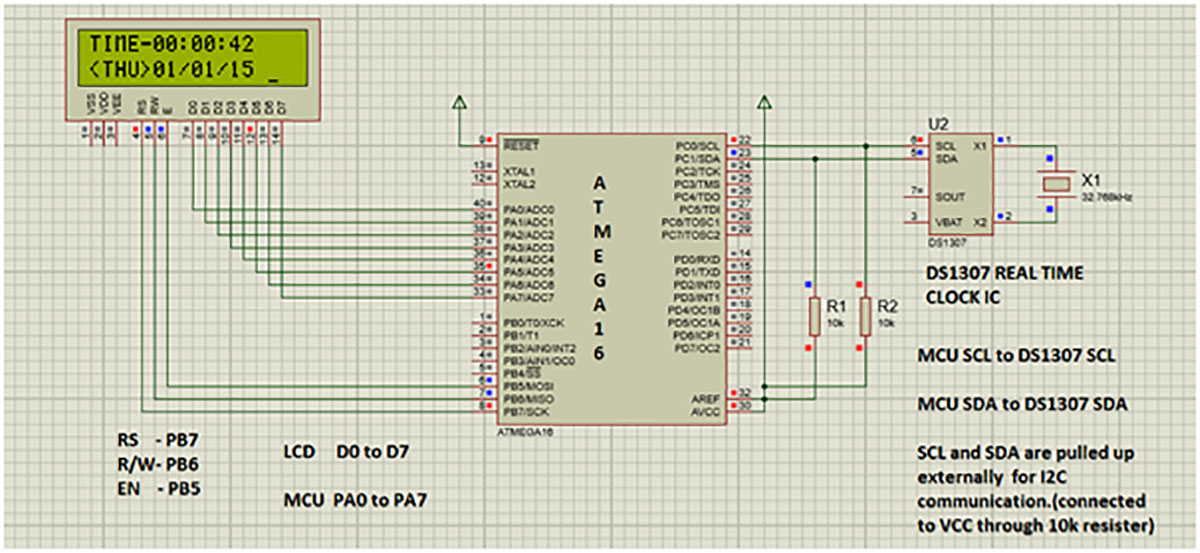

Questions related to this article?
👉Ask and discuss on EDAboard.com and Electro-Tech-Online.com forums.
Tell Us What You Think!!
You must be logged in to post a comment.